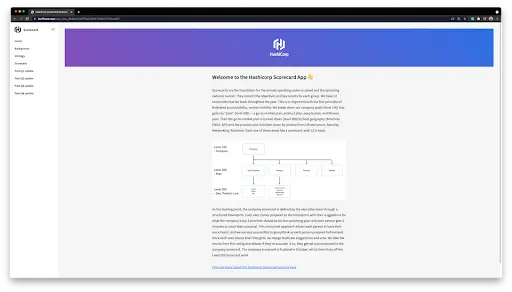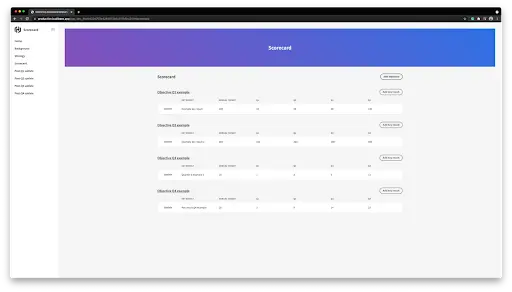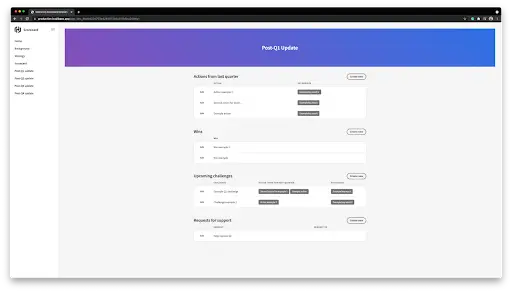
HashiCorp was founded by Mitchell Hashimoto and Armon Dadgar in 2012 with the goal of revolutionizing datacenter management: application development, delivery, and maintenance. They’re one of the leading open source organizations in the world, and were recently ranked No. 4 on the Forbes #Cloud100!
HashiCorp builds tools to ease these decisions by presenting solutions that span the gaps. Our tools manage both physical machines and virtual machines, Windows, and Linux, SaaS and IaaS, etc. And we’re committed to supporting next-generation technologies, as well.
The following template is not an endorsement from Hashicorp.

What’s included in the Scorecard template?
What other startups would call goal-setting, HashiCorp names “operating cadence”. They use two components - a source of truth and a ritual, over 3 three speeds - annual, quarterly, and weekly.
This template digitizes the operating cadence process and is known as the Scorecard template. The Scorecard template contains multiple screens and functions, listed below:
Background
Share highlights from the previous year and key learnings to take into the upcoming year.

Strategy
The best strategy sections share context on the strategy and then clearly define 3-5 focus areas. These focus areas become the objectives in the scorecard itself.

Scorecard - Annual planning
Scorecards confirm the objectives and key results for each group within an organization. As the starting point, the company scorecard is defined by the executive team through a structured brainstorm. Each exec comes prepared to the brainstorm with their suggestions for what the company’s top 3 priorities should be for the upcoming year, and each person gets 5 minutes to cover their proposal. This structured approach allows each person to have their voice heard, and we are less susceptible to groupthink as each person has prepared beforehand. Once each exec shares their thoughts, we merge duplicate suggestions and vote. We take the results from the voting and debate if they’re accurate. If so, they get set and measured in the company scorecard. The company scorecard is finalized in October, which then kicks off low-level group scorecards.
The best scorecard sections focus on quantifying the focus areas defined in the strategy section. These quantitative measures should include both leading and lagging indicators.

Quarterly updates - (WAR tables)
Scorecards are reviewed and updated each quarter. The most important part of the scorecard process is the quarterly review of progress. This is a reflection exercise to determine if the team is on track towards achieving its goals or if adjustments are needed. Each quarter, update the scorecard table and then complete the below WAR (wins, action items, requests for support) tables.
The most important part of the review process is narrowing in on the highest impact challenges and highest leverage action items to improve those challenges. If you focus on finding the 3 challenges and taking meaningful actions on improving them, that’s a great review.
We’ve not included the ‘weekly speed’ in the template as this is too low-level. If there is an appetite for such a template, please let us know. In the meantime, please enjoy this strategic template that follows the Scorecard process from HashiCorp.

Deployment options
- Budibase Cloud Host with Budibase and let us manage everything for you. Quick and easy.
- Docker Self-manage Budibase using Docker and Docker Compose.
- Kubernetes Use the Budibase helm chart to deploy Budibase directly into your Kubernetes cluster.

- Digital Ocean The simplest way to self-host Budibase on your own infrastructure - 1 click install.

